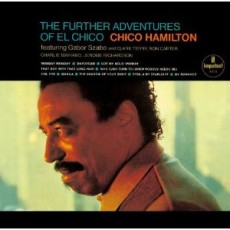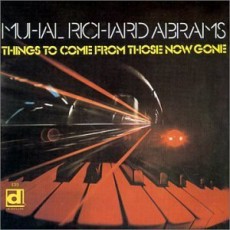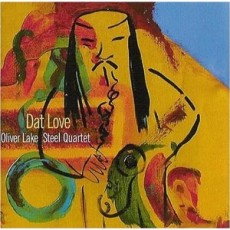
Daily Dose Of Jazz…
Terumasa Hino was born in Tokyo, Japan on October 25, 1942. His initial exposure to music began at four was with his father, a step dancer and trumpeter, taught him tap-dancing. He soon began performing with the trumpet when he was 9 years old, later adding flugelhorn to his arsenal. In the Fifties, Hino began his career as a professional jazz musician and by 1965 after working with several noted jazz artists, he joined Hideo Shiraki’s Quintet. He remained with the band till 1969, leaving to lead his own band full-time, which he formed in 1964.
1969 saw Hino releasing his successful third album “Hi-nology” to critical acclaim and was soon performing at jazz festivals and clubs worldwide before settling in New York City in 1975. Once there he found work with numerous jazz musicians including among others Gil Evans, Elvin Jones, Jackie McLean, Ken McIntyre, Dave Liebman, Hal Galper, Carlos Garnett, Greg Osby and Sam Jones in between leading his own group, which is credited by the jazz guitarist John Scofield for him turning from fusion to jazz.
From the 1980s, he spent more time in Japan and helped incorporate several elements such as avant-garde and fusion into his music. Trumpeter Terumasa Hino has a current catalogue of fifty-one albums and he continues to perform, record and tour around the world.
More Posts: flugelhorn,trumpet

Daily Dose Of Jazz…
Chico Hamilton was born Foreststorn Hamilton on September 20, 1921 in Los Angeles, California and was on a drumming fast track musical education in a band with his schoolmates Charles Mingus, Illinois Jacquet, Ernie Royal, Dexter Gordon, Buddy Collette and Jack Kelso. Subsequent engagements with Lionel Hampton, Slim & Slam, T-Bone Walker, Lester Young, Count Basie, Duke Ellington, Charlie Barnet, Billy Eckstine, Nat King Cole, Sammy Davis Jr., Billie Holiday, Gerry Mulligan and six years with Lena Horne established this young West Coast prodigy as a jazz drummer on the rise, before striking out on his own as a bandleader in 1955.
He recorded his first LP as leader in 1955 on Pacific Jazz with George Duvivier and Howard Roberts and in the same year formed an unusual quintet in L.A. featuring cello, flute, guitar, bass and drums that has been described as one of the last important West Coast jazz bands. The original personnel: Buddy Collette, Jim Hall, Fred Katz and Jim Aton. Hamilton continued to tour using different personnel, from 1957 to 1960, Paul Horn and John Pisano that are featured in the film “Sweet Smell Of Success in 1957 and Jazz On A Summer’s Day with Nate Gershman and Eric Dolphy in 1960. Dolphy was enlisted to record on Hamilton’s first three albums, however by 1961 the group was revamped with Charles Lloyd, Gabor Szabo, George Bohannon and Albert Stinson.
Over the course of his career Chico changed personnel keeping his sound fresh and innovative. Subsequently he recorded for Columbia, Reprise and Impulse, scored for television, commercials and radio. He has worked with countless musicians and vocalists, received the New School Jazz and Contemporary Music Programs Beacons in Jazz Award and was awarded the WLIU-FM Radio Lifetime Achievement Award. He has been given a NEA Jazz Master Fellowship, was confirmed by Congress with the President’s nomination to the Presidents Council on the Arts, received a Living Legend Jazz Award as part of The Kennedy Center Jazz in Our Time Festival, as well as receiving a Doctor of Fine Arts from the New School where he currently teaches. Drummer Chico Hamilton continued to perform and record until his passing on November 25, 2013.
More Posts: drums

Daily Dose Of Jazz…
Muhal Richard Abrams was born on September 19, 1930, in Chicago, Illinois. He didn’t start his musical training until his enrollment in Roosevelt University but not hearing what he heard in the streets caused him to study piano on his own. His natural ability to study and analyze things allowed him to read, identify the key the music was in, then the notes and how to play the piano. Listening to Art Tatum, Charlie Parker, Bud Powell, Thelonious Monk and many others, he concentrated on the composition of Duke Ellington and Fletcher Henderson pieces. Although it took a lot of time and sweat, he was soon playing on the scene.
Abrams’ first gigs were playing the blues, R&B, and hard bop circuit in Chicago and working as a sideman with everyone from Dexter Gordon and Max Roach to Ruth Brown and Woody Shaw. In 1950 he began writing arrangements for the King Fletcher Band, and in 1955 played in the hard-bop band Modern Jazz Two + Three, with tenor saxophonist Eddie Harris.
After this group folded he kept a low profile until he organized the Experimental Band in 1962, a contrast to his earlier hard bop venture in its use of free jazz concepts. This band, with its fluctuating lineup, evolved into the Association for the Advancement of Creative Musicians (AACM), emerging in May 1965 with Abrams as its president. Opting not to play in smoky nightclubs they often rented out theatres and lofts where they could perform for attentive and open-minded audiences.
His landmark album “Levels and Degrees of Light” in 1967 saxophonists Anthony Braxton and Maurice McIntyre, vibraphonist Gordon Emmanuel, violinist Leroy Jenkins, bassist Leonard Jones and vocalist Penelope Taylor. However, he never strayed too far from hard bop during this period playing with Eddie Harris, Dexter Gordon and other hard boppers.
Moving to New York in 1975, Abrams became a part of the local Loft Jazz scene and in 1983 he established the New York chapter of the AACM. Over the course of his career he composed for symphony orchestras, classical works, string quartets, solo piano, voice, and big bands in addition to making a series of larger ensemble recordings that include harp and accordion. He has recorded extensively under his own name frequently on the Black Saint label and as a sideman on others’ records, working with the likes of Marion Brown, Chico Freeman, Eddie “Lockjaw” Davis, Art Farmer, Sonny Stitt, Art Ensemble of Chicago, and numerous others.
Muhal Richard Abrams, educator, administrator, composer, arranger, cellist, clarinetist and pianist was given a Lifetime Achievement Award by the Vision Festival, New York City’s premier jazz festival and in 2010 was honored as a NEA Jazz Master. He continues to perform and record.

Daily Dose Of Jazz…
Oliver Lake was born in Marianna, Arkansas on September 14,1942 and his family moved to St. Louis when he was two. He began drawing at the age of thirteen and soon after began playing cymbals and the bass drum in a variety of drum and bugle corps. At 17, he began to take a serious interest in jazz and started playing percussion followed by alto saxophone. His piercing, bluesy, biting sound is his trademark and his explosive unpredictable solos are akin to Eric Dolphy.
During the 1960s Oliver taught school, worked in several contexts around St. Louis and led along with Julius Hemphill and Charles “Bobo” Shaw, BAG, the Black Artists Group. In 1972 Lake moved to Paris for two years working with his colleagues from BAG, returned to New York and immersed himself into the then burgeoning jazz loft scene. Like many other members of BAG, (Black Artists Group) and its Chicago-based sister organization, the Association for the Advancement of Creative Musicians (AACM), he moved to New York in the mid-’70s, working the fertile ground of the downtown loft scene and quickly establishing himself as one of its most adventurous and multi-faceted musician.
Oliver is co-founder of the internationally acclaimed World Saxophone Quartet with Julius Hemphill, Hamiet Bluiett and David Murray in 1977. Over the next two decades the group crossed over to new audiences, in part, due to their late 80s albums of Ellington and popular R&B tunes. He leads his own Steel Quartet and Big Band; has worked with hip hop artists Mos Def and A Tribe Called Quest and Me’shell Ndegeocello; has created a groundbreaking roots/reggae ensemble “Jump Up”; founded Passin’ Thru, Inc. – a non-profit dedicated to fostering, promoting and advancing the knowledge, understanding and appreciation of jazz, new music and other disciplines related to music.
Oliver Lake, the alto saxophonist, flautist, composer, poet and painter has collaborated with numerous notable choreographers, poets and a veritable Who’s Who of the progressive jazz scene of the late 20th century. He has recorded as a leader for Freedom, Black Saint, and Black Lion, Novus, Gramavision, Blue Heron Gazell, Soul Note and other record labels. The mainstay of the avant-garde and free jazz realms continually performs all over the U.S. as well as in Europe, Japan, the Middle East, Africa and Australia. He paints daily, using oil, acrylics, wood, canvas, and mixed media.

Daily Dose Of Jazz…
Karen Borca was born September 5, 1948 in Green Bay, Wisconsin. The jazz bassoonist studied music at the University of Wisconsin where she met Cecil Taylor and became his teaching assistant during her senior year. She went on to play in his Cecil Taylor Unit.
By 1974 she was the teaching assistant to longtime Taylor sideman Jimmy Lyons, who Karen married and played with until his passing in 1986. She has continued to perform on the Lower East Side of New York City with musicians like William Parker, Marco Eneidi, Joel Futterman, Sonny Simmons, Alan Silva and Jackson Krall, while also leading her own band.
An accomplished sideman, she has recorded on albums with Joe Morris, Alna Silva, Paul Murphy, Bill Dixon and with Earth People. She has an impressive facility, playing with the litheness and imagination of a first-rate free jazz saxophonist. Bassoonist Karen Borca is one who has mastered an extremely difficult instrument and adapted it to free jazz that she continues to perform.
More Posts: bassoon

